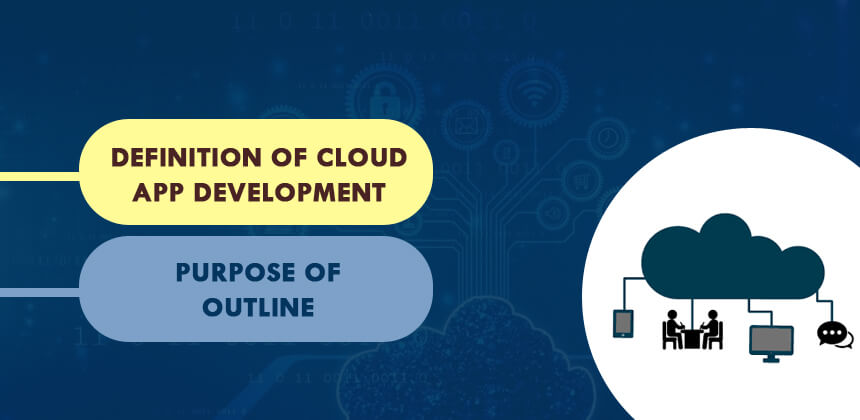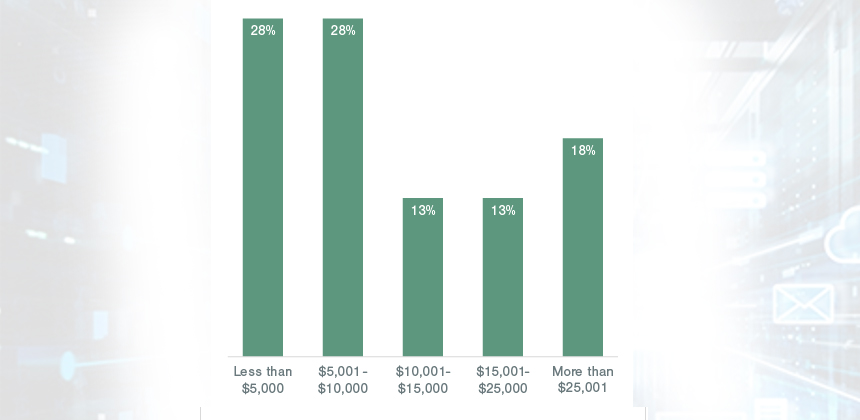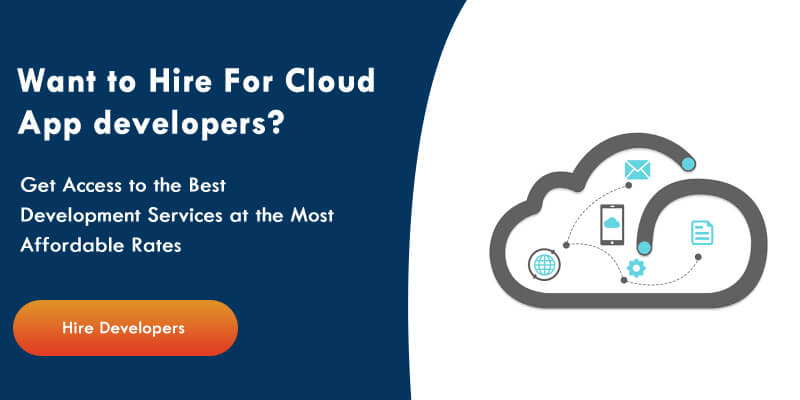As an experienced developer in cloud app development, I am excited to present a comprehensive guide to Cloud App Development: Processes, Pricing, and Benefits. This guide will provide valuable insights into the world of cloud-based application development, covering essential aspects such as development processes, cost considerations, and the numerous advantages that come with embracing cloud technology.
Cloud app development has revolutionized the way applications are built, deployed, and maintained, offering developers and businesses a more efficient and scalable approach to creating software solutions. By leveraging the power of cloud computing, developers can create applications that are not only more flexible and resilient but also more cost-effective and easier to manage.
In this guide, we will explore the following topics:
- Cloud App Development Processes: We will delve into the various stages of cloud app development, from planning and design to development, testing, deployment, and maintenance. This will provide a clear understanding of the steps involved in creating a successful cloud-based application.
- Pricing Considerations: Understanding the cost implications of cloud app development is crucial for businesses and developers alike. We will discuss the factors that influence pricing, such as infrastructure, storage, and data transfer costs, as well as the different pricing models available in the market.
- Benefits of Cloud App Development: Embracing cloud technology offers numerous advantages, including scalability, flexibility, cost savings, and enhanced security. We will examine these benefits in detail, highlighting how they can contribute to the success of your application and overall business operations.
By the end of this guide, you will have a solid understanding of the processes, pricing, and benefits associated with cloud app development, empowering you to make informed decisions and harness the full potential of cloud technology in your application development endeavors. So let’s begin
What is Cloud Development
Cloud development, also known as Cloud App Development or cloud computing development, refers to the process of designing, building, deploying, and managing applications that leverage the power of cloud computing infrastructure. In simpler terms, it is the practice of creating software solutions that run on remote servers, rather than on local devices or on-premises servers.
To provide an analogy, imagine a traditional amusement park where each ride operates independently, requiring its own power source, maintenance, and staff. This setup can be compared to traditional application development, where each application is built, deployed, and maintained on individual servers or devices.
Now, envision a modern amusement park where all the rides share a centralized power source, maintenance team, and staff. This setup is more efficient, cost-effective, and easier to manage. This is similar to cloud development, where applications are built, deployed, and maintained on shared remote servers provided by cloud service providers. These providers manage the underlying infrastructure, allowing developers to focus on building and improving their applications without worrying about hardware, networking, or other infrastructure-related concerns.
Development of cloud apps is like putting together a puzzle, with each piece representing a new feature.

Definition of Cloud App Development
The process of designing software applications built to run on cloud infrastructure is known as cloud application development. The term “Cloud” refers to a grouping of computers and computational resources managed by third-party suppliers such as Amazon Web Services (AWS), Microsoft Azure, or Google Cloud Platform.
Scalability, reliability, cost-effectiveness, flexibility, and security are all advantages of cloud-based applications.
Cloud-native technologies such as microservices architecture, containerization, and server less computing are commonly used in cloud-based application development. These technologies enable enterprises to develop and deploy software applications faster and more efficiently than traditional on-premises alternatives.
Purpose of Outline
Let’s start our adventure by exploring the intriguing world of cloud app development processes. Just like putting together a complex puzzle, each step represents a new feature coming to life. From the initial planning and conceptualization phase, where ideas take shape, to the design, development, testing, deployment, and maintenance stages – we’ll uncover the secrets behind building successful cloud-based applications.

Benefits of Cloud Application Development
In today’s digital era, businesses are harnessing the transformative potential of cloud-based development to create and deploy software applications with unparalleled efficiency and effectiveness. As an expert in cloud development, I am excited to share the remarkable benefits that this cutting-edge technology brings to the table.
1. Scalability: Scaling New Heights
Imagine having the ability to scale your software infrastructure seamlessly, regardless of demand fluctuations. Cloud development empowers businesses with unlimited resources, enabling them to effortlessly expand or contract their applications as needed. This is particularly advantageous for companies experiencing seasonal spikes or rapid growth, as they can swiftly adapt their software to meet ever-changing demands.
2. Reliability: Uninterrupted Performance
With cloud platforms, reliability takes center stage. These robust environments are meticulously designed to be highly available and fault-tolerant, ensuring uninterrupted access to your applications. Built-in redundancies and failover mechanisms provide peace of mind, guaranteeing that your software remains accessible to end users, no matter the circumstances.
3. Cost-effectiveness: A Smart Investment
Bid farewell to hefty upfront infrastructure costs and maintenance expenses. Cloud development offers a cost-effective alternative, allowing businesses to pay only for the resources they consume. This empowers both small and large enterprises to invest their budgets wisely, optimizing their infrastructure investments and focusing on growth and innovation.
4. Flexibility: Agility Unleashed
In today’s fast-paced world, agility is key to staying ahead of the curve. Cloud app development services provide unparalleled flexibility, enabling businesses to swiftly spin up new development and testing environments. Deploying new software releases becomes a breeze, as cloud platforms abstract the complexities of infrastructure management, empowering businesses to embrace an agile approach with confidence.
5. Security: Shielding Your Applications
In an interconnected landscape, security is paramount. Cloud platforms come fortified with robust security measures, safeguarding your applications and data from cyber threats and breaches. These platforms equip businesses with a rich array of resources and tools to fortify their applications, ensuring the highest levels of data integrity and user privacy.
Embarking on a cloud development journey is akin to painting on a limitless canvas, where innovation knows no boundaries. With scalability, reliability, cost-effectiveness, flexibility, and enhanced security at your fingertips, cloud-based application development opens doors to limitless possibilities for businesses across industries.
So, dare to dream big, and let the cloud be your guiding light as you unlock unprecedented potential and redefine the future of software applications.

Cloud Application Development Process
Welcome to the world of cloud app development, where innovation knows no bounds and possibilities are limitless. As an expert in cloud development, I am thrilled to guide you through the exhilarating journey of creating high-quality cloud-based applications that cater to the evolving needs of end-users.
1. Planning and Conceptualization: Fueling the Spark of Imagination
In this pivotal phase, businesses embark on a voyage of planning and conceptualization. Here, stakeholders converge to define the scope and requirements of their software project, breathing life into their visionary ideas. By crafting user stories, use cases, and outlining the key features and functionalities, businesses lay the groundwork for a transformative application that resonates with their target audience.
2. Design: Igniting the Flames of User Delight
In the design phase, we enter the realm of captivating user interfaces and seamless user experiences. With meticulous attention to detail, businesses create awe-inspiring wireframes and mockups, ensuring that every interaction within the application is a symphony of delight. The goal is to craft an intuitive and visually stunning interface that leaves users in awe and eagerly engaged.
3. Development: Harnessing the Power of Cloud Flexibility
Now comes the stage where dreams turn into reality. Skilled application developers unleash their expertise, coding the foundation of cloud-based applications. With the agility and scalability offered by cloud platforms, businesses can rapidly develop and test new code, fine-tuning their creations to perfection. The cloud becomes our canvas, where we paint with lines of code and transform ideas into functional masterpieces.
4. Testing: Unveiling the Flawless Experience
Every masterpiece undergoes rigorous scrutiny, and the same applies to cloud-based applications. The testing phase emerges as a crucial step in the development process, where bugs and issues are meticulously hunted down and eradicated. Leveraging the power of cloud-based platforms, businesses can automate testing processes, ensuring a smooth and seamless user experience. Time is saved, errors are minimized, and the stage is set for a flawless application.
5. Deployment: Soaring to New Heights
With the development complete, it’s time for the grand unveiling. Cloud app development services take center stage, orchestrating the deployment process. Automated deployment pipelines work their magic, seamlessly launching new software releases without manual intervention. To ensure a seamless experience, businesses configure the application correctly and integrate it with other cloud services, like databases or storage, unleashing the full potential of their creation.
6. Maintenance: Nurturing the Application’s Lifeline
As the application takes flight, the journey doesn’t end. The final phase, maintenance, ensures its continuous evolution. With vigilant eyes, the cloud app development company monitors for issues and swiftly implements updates to address any defects. The power of cloud-based platforms shines through as businesses effortlessly scale their infrastructure, adapting to changing demands while upholding impeccable performance and availability.
In the world of cloud development, every developer, big or small, wields the power to shape the future. With scalability, reliability, cost-effectiveness, flexibility, and security as our guiding principles, we embark on a transformative journey, crafting applications that push the boundaries of innovation.

Costs of Cloud-based Application Development
Application development in the cloud offers numerous advantages, but it’s crucial to understand the costs involved to make informed decisions. These costs encompass infrastructure, development tools, maintenance, compliance, and staffing. Gaining insight into these costs is essential for managing the budget of all cloud-based app development projects effectively.
1. Types of costs
Cloud app development involves various costs, including cloud infrastructure, development and testing tools, maintenance, and support. Additionally, businesses must consider the expenses associated with hiring skilled developers and DevOps engineers, as well as providing ongoing training and education to keep up with the latest technologies and best practices.
Moreover, compliance with industry standards and regulations, such as HIPAA or GDPR, may necessitate additional resources for implementation and maintenance. Grasping these costs and their relationship with the development process is vital for efficiently managing the budget for cloud-based app development projects.
2. Factors affecting costs
Several factors can influence the cost of cloud-based app development, such as:
Application complexity: The intricacy of the application can affect the project’s duration and staffing requirements, leading to increased costs.
Team size and expertise: Larger and more experienced development teams command higher salaries, impacting the overall project cost.
Quality Assurance (QA) testing: This critical component of app development can significantly influence costs, depending on the required testing level and resources.
Integration with existing systems: Integrating the application with existing systems and services may require additional resources and expertise, adding to the project’s cost.
Compliance and security: Adhering to regulatory frameworks and security standards can necessitate extra resources, increasing the overall cost.
Understanding these factors is essential for effectively managing the budget for cloud-based development projects.
1. Estimating costs
To estimate the costs of app development in the cloud, businesses should consider the resources required for development, testing, deployment, and ongoing maintenance and support. Many cloud providers offer cost calculators and other tools to help businesses estimate their cloud infrastructure’s total cost of ownership (TCO). Additionally, it’s essential to factor in the costs of training, compliance, and any specialized tools or platforms used during the development process.
By understanding the various costs involved in cloud-based app development and the factors that influence them, businesses can make informed decisions and optimize their budget management for successful projects. As a cloud development expert, I encourage businesses to explore the benefits of cloud computing while keeping a keen eye on cost management to maximize their return on investment.
How can Zestminds help you with Cloud App Development?
Zestminds is an app development firm that focuses in software development. Their professional team of developers and engineers can assist firms in designing, developing, and deploying software applications on cloud platforms including AWS, Azure, and Google Cloud Platform. Zestminds provides a variety of services, including cloud consulting, application development, testing, deployment, and maintenance, and may assist businesses in leveraging the benefits of application development to meet their business objectives.
Conclusion
Scalability, reliability, cost-effectiveness, flexibility, and security are just a few of the advantages of cloud application development. Planning, design, development, testing, deployment, and maintenance are all required steps in a structured development process. They are aware of the expenses connected with cloud-based development as well as the many elements that influence those costs. Overall, cloud app development services enable enterprises to build and deploy highly scalable enterprise apps at a low cost.
